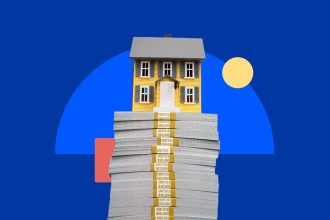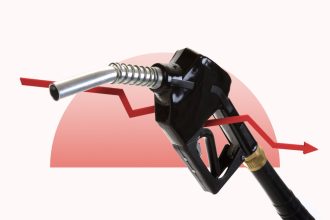Hispanolistic/Getty Images
“Unlock the value that’s sitting in your home!”
“Open a line of credit, get the money you need fast!”
“Tap into your hard-earned equity for renovations, debt consolidation, or whatever you need!”
If you’re a homeowner like me, your mailbox has probably been flooded with postcards and letters from lenders of late, with similar breathless statements. Each one promises you access to funds through a home equity line of credit (HELOC), home equity loan or cash-out refinance.
If you’ve built up a big ownership stake, like many Americans have, it can certainly be tempting. According to Bankrate’s Home Equity Study, home equity possessed by mortgage-holding homeowners increased 142 percent on average between 2020 and 2025, with nearly every part of the country experiencing growth.
But before you start making plans for all that cash, it’s worth taking a moment to ask if you should actually accept this offer. Who exactly is making it? Is there some sort of catch? Even if not, is this even the best time to tap the equity in your home?
Why all these home equity offers?
What’s behind all these offers in your mail and maybe even email? The simple answer: a record amount of home equity.
According to property data analyst ICE’s latest Mortgage Monitor, homeowners entered the third quarter of 2025 with $17.8 trillion in total equity, an all-time high. That adds up to approximately 48 million Americans with about $213,000 of equity in their homes available to be accessed.
Add to the mix historically low mortgage rates that many homeowners scored during the pandemic. In late 2024, the Consumer Financial Protection Bureau reported that more than half of the nearly 51 million active mortgages have interest rates below 4 percent, much lower than today’s near 7 percent mortgage rates.
Many borrowers don’t want to let go of those ultra-low rates by selling their residences. Instead, they are opting to stay put and leverage their homes’ worth to fund renovations, pay off higher-interest debt, or cover other big expenses.
Sensing the opportunity, lenders are promoting ways to do that, spreading the word about second mortgages and cash-out refinances (which replace your mortgage with a bigger one, giving you the equity-based difference in a payout). It doesn’t hurt that home equity interest rates started to slide last autumn, and now are at their lowest rates in years.
The proof is in the numbers. In 2024, HELOC and home equity loan originations increased more than 7 percent over 2023, according to the Mortgage Bankers Association. Total HELOC and home equity loan debt outstanding grew more than 10 percent in the same period. As for cash-out refinances, they accounted for more than half of the refi activity in the second quarter, with 70 percent of borrowers tapping an average of $94,000 in home equity, ICE says.
What to watch out for with home equity offers
Approach any offer to borrow against your home with caution, especially if it’s unsolicited. Take these steps to protect yourself:
- Make sure the offer is legitimate: Just because the offer has official-looking logos from the Equal Housing Opportunity or FDIC, don’t assume it’s actually from a lender. Some of these mailers don’t come directly from a financial institution, but from a third-party marketing company (one giveaway: a line that reads, “not affiliated with or endorsed by any bank or lending institution”). Be wary of urgent language that suggests the offer will vanish if you don’t “act now!” Instead of using the contact information on the flyer, look up the company’s official contact info online and verify it before sharing any personal details. Even if the offer does seem to come from a lender – even one you recognize – check its website for product or promotional mention. “Phishing” emails that purport to be from a business are very common today.
- Read the fine print: Low advertised rates or other favorable terms may only be available to borrowers with a specific credit profile, property type, equity amount or loan-to-value ratio. Notice the disclaimers in small print, “this is not a pre-approved offer” or “this is not a commitment to lend,” as there is no guarantee you will qualify.
- Verify your equity: Many of these advertisements highlight the large amount of cash you might be able to get. Keep in mind, though, these sums are based on publicly available information on your home — derived from your property title, deed of sale or even a listings portal’s market value estimator. But the lender will most likely order an official appraisal to determine how much equity you have (the market value of your home, minus your outstanding mortgage), and from that, how much you can borrow.
- Check fees and terms: Some loans come with origination fees, closing costs, or prepayment penalties. You also may have to pay for the cost of an appraisal. These can add up quickly.
- Shop around: Don’t settle for the first offer that lands in your mailbox – even if it’s from your own bank. Instead, use it as a basis to check out other lenders. Compare everything, including the terms, rates and fees, to make sure you’re getting the best overall deal.
How much equity do you need to be able to borrow?
To qualify for a HELOC, home equity loan or cash-out refinance, lenders typically require that you have at least 20 percent equity in your home, though some allow as little as 10 or 15 percent.
Considerations when tapping your home equity
Just because you have equity doesn’t mean you should borrow against it. Before you make a move, first ask yourself these key questions:
- Could I potentially lose my home? Any borrowing secured by your home carries risk. HELOCs and home equity loans are liens against your property: Miss too many payments, and the lender has a right to foreclose on it. That goes for cash-out refis too, of course, as they are mortgages.
- What is your purpose for borrowing? Don’t borrow against your home for non-essential, frivolous expenses. Rather, a home equity line of credit (HELOC), home equity loan or cash-out refinance should be used as an investment: enhancing your property, which increases its value, or improving your own finances (by paying off other debts). HELOCs, which let you draw funds as needed, can be especially good for expenses that stretch out over several years. If the money is used to improve your home, the interest may be tax-deductible.
- How will tapping my home equity impact my monthly payments? Each option works a bit differently. You will get predictable payments with a fixed-rate home equity loan, amortized over its entire term. With HELOCS, you may enjoy a fixed introductory rate for a set period, but then be prepared for a variable rate, which can cause payments to fluctuate each month. And a cash-out refinance replaces your mortgage with a bigger loan, resulting in higher monthly payments.
- How will borrowing reduce my ownership stake? Borrowing against your home reduces the portion of your property you actually own. Every dollar drawn via a HELOC or home equity loan, or included in a cash-out refinance, lowers your equity and increases your debt until it’s repaid.
- Is now financially the right time? Even if you qualify, consider factors like interest rates, your employment stability and your personal finances. If rates are high or your budget is tight, it may be smarter to wait, pay down existing debt, or explore other funding options.
Just because a lender makes you an offer to access your home equity, it doesn’t mean you have to take it. Treat it like any major financial decision: know why you need the money, understand the terms and make sure the payments are manageable. Whatever option you choose, make sure you don’t rush in without a plan, lest it turn your home equity into a financial headache.

Get more from your home
Keep your financial options open and put your equity to use with a flexible HELOC.
Explore HELOC offers
Why we ask for feedback
Your feedback helps us improve our content and services. It takes less than a minute to
complete.
Your responses are anonymous and will only be used for improving our website.
Help us improve our content
Read the full article here














